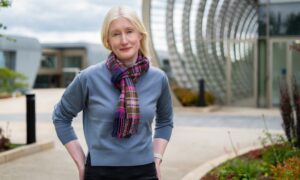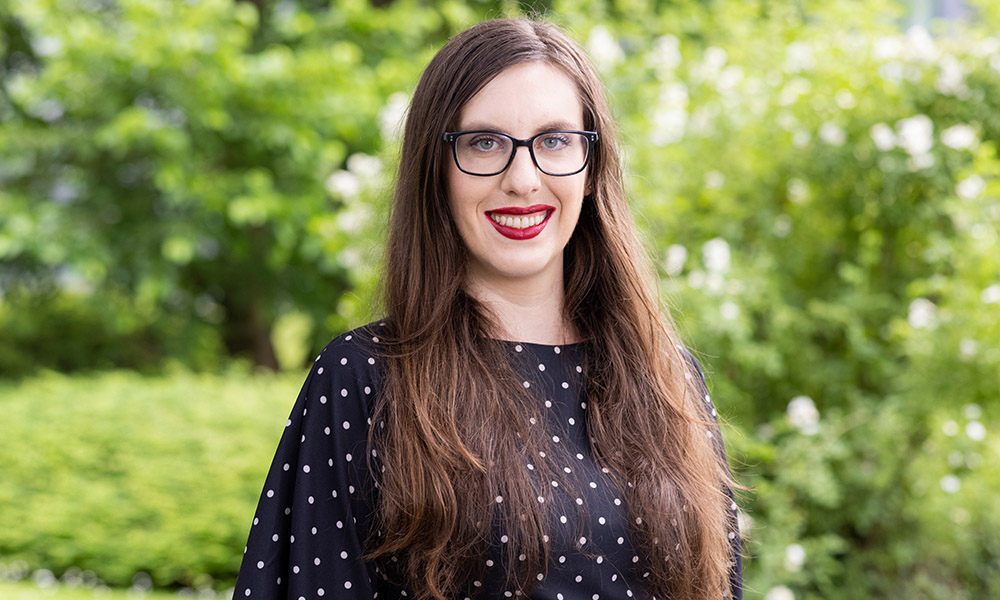
Food safety, antibiotics, and a shrinking planet
An early-career computational biologist discusses the impact of molecular biology on societal issues.

It all started with Bacillus cereus.
The name may not be familiar, but most likely the symptoms it causes are. Foodborne pathogen B. cereus usually causes 24 hours of nausea, diarrhoea, and/or vomiting when improperly cooked or stored foods are eaten after being left at room temperature for too long. This form of food poisoning, while typically mild, is caused by a toxin produced by B. cereus, which cannot be cooked away. The US Centers for Disease Control and Prevention estimate that the US has more than 63,000 cases of B. cereus illness each year – all of which are attributed to eating contaminated food.
Laura Carroll is a postdoc in EMBL’s Zeller team and the recent recipient of the International Association for Food Protection’s Institut Merieux Young Investigator Award in Antimicrobial Resistance. B. cereus was an important part of her PhD work, which she began in 2014 at Cornell University in New York state. “No one else was studying this much at the time, so I somehow found a little niche for myself with B. cereus,” Laura recalls. “Today, I’m interested in developing computational methods that give us insight into other microorganisms that pose a threat to global public health.”
At EMBL, Laura has been developing machine learning models that can find and identify biosynthetic gene clusters (BGCs) in bacterial genomes. BGCs are groups of genes in a bacterium’s genome that allow the bacterium to produce specialised metabolites. These metabolites can give the microbes that produce them certain advantages, allowing the microbes to interact with their environment or with other bacteria, or to respond to specific stressors. Some BGC-encoded metabolites, such as the toxin produced by B. cereus, are bad for humans and can cause illness. However, other metabolites encoded by BGCs have important uses in medicine: many antibiotics, cardiovascular drugs, and other medications (e.g. anticancer and anti-inflammatory or immunosuppressant agents) have historically been created from BGC-encoded metabolites.
The computer model Laura currently uses took approximately two years to build and train. “We’re essentially helping scientists hunt for antibiotics, toxins, and other novel metabolites encoded by these groups of genes,” Laura says. “Ours is a machine learning-based approach. We train a model by showing it examples of what a BGC looks like. Well-annotated genomic data guide this process, indicating what might be a BGC.”
Laura’s prototype program is a work in progress, but is already available to help experimentalists more precisely target their own hunts for BGCs.
From maths to gene discovery
With a love of maths, supportive science teachers, and a mother who was a rheumatologist and STEM role model, Laura’s interest in pursuing a career in science grew as she got older.
“Initially, I’d planned on doing more math as an undergrad, but I discovered computational biology was a more inclusive space for women in science,” she recalls. “I had female role models who made it seem like a viable career option. Not everyone has that experience.”
During her PhD on antimicrobial resistance, Laura discovered a novel gene in a strain of Salmonella. The gene she discovered, called mcr-9, enables some bacteria to become resistant to an antibiotic called colistin under certain conditions.
“Basically, colistin is a last-resort antibiotic that is critically important to human medicine,” Laura explains. “It’s used to treat people with extensively drug resistant bacterial infections, when all other antibiotics have failed. So, by finding this gene, it can help us understand why and how this resistance occurs, so that we can potentially start a path towards developing new antibiotics that don’t have this same vulnerability.”
Thinking globally
In 2019, Laura joined EMBL, seeking a research experience that would broaden her horizons.
“I think it’s important to experience new ways of doing things,” she says. “I’ve learned new methods and been introduced to new schools of thought. There’s not just one way to work with a dataset.”
Laura believes the research landscape will be enhanced by the next EMBL Programme, Molecules to Ecosystems, which begins in 2022. The programme encourages scientists to carry out multidisciplinary work and to step outside the lab to study life in the context of its natural environment. She points to the COVID-19 pandemic as the best justification for broadening the scope of molecular biology in this way. A world with fast and frequent travel enriches our lives, but it also presents risks, with new opportunities for disease to spread more quickly and widely. Molecular biology can help us to solve some of these challenges.
“We’re travelling more. Global supply chains allow us to get food and livestock from all over the world. We’re more interconnected than ever before,” Laura says. “And this dovetails into what I am interested in: how we interact with food and the environment, and how it sets up a path for the transmission of pathogens.”


